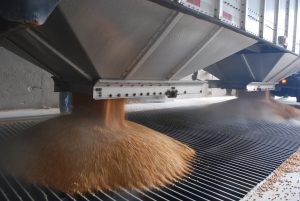AirSweep launches new and improved bulk material handling equipment
For decades, half of S&P 500 companies and thousands of SMEs across the globe have used AirSweep to prevent bridging, ratholing and other material build-up. Now AirSweep has gotten even better. On May 7, 2024 Control Concepts, Inc. rolled out the AirSweep MAX (short for Material Activation Xcellence). It further improves the AirSweep technology to […]
See PostAirSweep Reduces Cleaning and Maintenance Time
Periodic cleaning and maintenance of vessels can cause significant costs and downtime. However, many companies have found a simple way to streamline this process and further achieve material handling automation. They use AirSweep to improve material flow and flush vessels completely clean. How does AirSweep help clean the vessels? AirSweep releases high-pressure, compressed air pulses […]
See Post4 Companies That Switched to AirSweep and Improved Bulk Material Processing
The right flow aid can make bulk material processing more efficient. It can resolve common problems like bridging and ratholing, and prevent thousands of hours of downtime a year. However, many flow aids fail to meet expectations. They only partially clear material, or even cause the powders or solids to become more compact. Companies still […]
See Post5 Videos That Prove That AirSweep Works On the Toughest Materials
Do you work with a bulk material that tends to clump, settle, or stick to your vessel walls? Does the poor flow cause hours of downtime or affect the quality of your product? Have you tried other flow aids but still ended up manually clearing out the material blocks? Learn how to improve material handling […]
See PostProcessing Mined Materials: Challenges and Solutions
Mined materials are used in almost all industries, from construction to consumer goods. However, these materials can be challenging to move and process because of their physical and chemical properties. Let’s take a closer look at the common problems that can occur while processing mined materials, and how we can help. Types of Mined Materials […]
See PostThe Hidden Costs of Poor Material Handling–and How AirSweep Can Help
The Hidden Costs of Poor Material Handling–and How AirSweep Can Help Bridging, ratholing and other material blocks can have a huge impact on your bottom line. When material doesn’t flow, production stalls and you spend time and money fixing the problem. You also compromise your product safety and quality–and even your business reputation. That’s why […]
See PostThe Complete Guide to Flow Aids
All industries need reliable material flow to maintain productivity and product integrity. Any material blocks–like settling of powders in storage, or material bridging in a hopper–cause delays and extra costs. Unfortunately, most bulk materials will not flow properly without some kind of intervention. This complete guide to flow aids will tackle: What is a flow […]
See PostSafety and Production Issues? Signs You Need a Conveyor Belt Speed Sensor
Barnes Concrete Co., a manufacturer of ready-mix concrete, handles tons of bulk material a day. They have 12 mixers, with feeders loading up to 250 tons of gravel an hour. Any equipment malfunction would lead to an avalanche of bulk material which could injure workers and delay production for days. Plant supervisor Joe Kruzewski estimates […]
See Post3 Ways AirSweep is Used in the Food Industry
Material handling efficiency is important for every industry, but it is especially important for companies that work with food and beverage, pharmaceuticals, nutraceuticals, and pet food. These industries work with materials that can spoil and put millions of users at risk for poisoning and other health risks. They also need to make sure that materials […]
See PostHow to Improve Material Handling Safety: 7 Best Practices for a Safer Work Environment
Material handling can present various safety challenges, including worker injury, exposure to toxic chemicals, flammable environments, and material spills. It’s important to implement safety protocols to prevent health hazards and meet industry regulations. Read how to improve material handling safety in all plant operations. Regular Training and Refresher Courses Training is the bedrock of any […]
See Post













